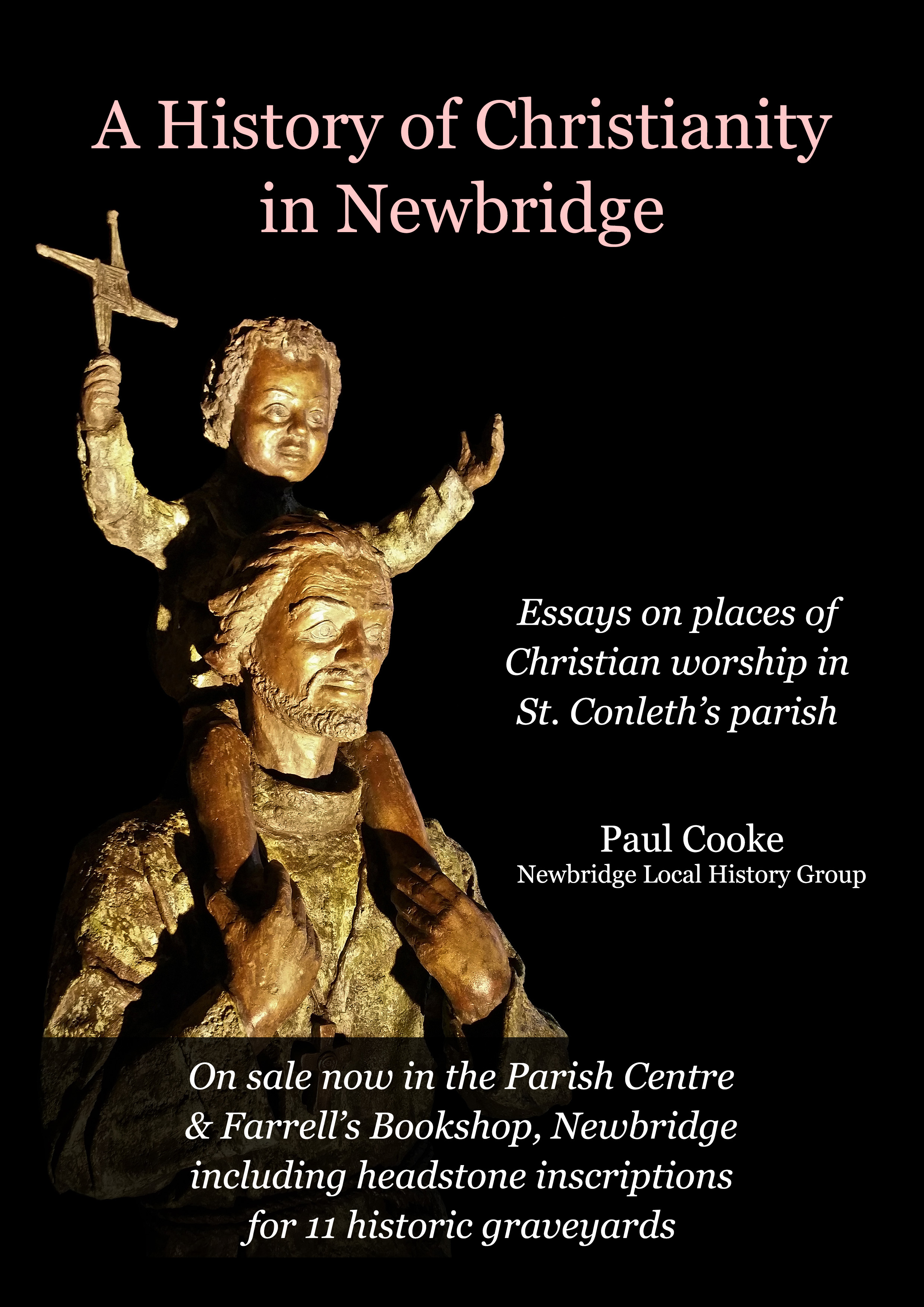Frank Boland: Going to the Pictures, 1950s
Going to the Pictures

In the 1950’s, the young lads of Newbridge did not go to the cinema to see the movies or the films. No! We simply “went to the pictures”. The words cinema and films or movies were not in our vocabulary then. We had two picture-houses (cinemas) in Newbridge, the Odeon in Main St. opposite the Town Hall and the Palace in Henry St., opposite Annfield Terrace. The Odeon was first choice as it had the latest pictures (films) and was more modern whilst the Palace did not have the top films and also probably struggled to live up to its name. Nevertheless both picture-houses played a major role in our entertainment and wider “education” in those pre-television days.
Permission to go was not readily given in our house and some groundwork had to be done. The initial ploy would be to say that one of my cousins was going, provided that I was also let go. They would be using the same line. Obviously, the picture itself had to be a particularly good one (sure, weren’t they all!) and it would be a travesty if I missed it. So the excuses were trotted out: homework would always be done and I would have no books for reading and no one to play with as, of course, everyone else was going. Economically, it was essential that you only looked to go on the half-price night, the second night of the two-night showing. The weekly programme changed on Mon., Wed. and Fri. and these were full price nights as was Sun. night. When my Mam would eventually say “check with Dad and don’t make a habit of this”, I knew I was home and dry. Sunday matinees were frowned upon by parents. “It’s too fine a day to be cooped up in a picture-house” was the usual response to my request, so generally I only managed a matinee on wet days. There was usually a serial on for the matinees, Dick Tracy or Flash Gordon or Hopalong Cassidy, and if you were not a regular you lost out.
What constituted a “good” picture to this young lad of the 50’s? Well, the primary requirement was for “Action” with a capital A. By action, I mean of the shooting/gunfire variety. This was normally supplied in a Western – cowboys, Indians and the cavalry for good measure. A war picture would also fit the bill. You could be reasonably sure of some genuine action when the Indians were about and Randolph Scott or Burt Lancaster was on screen. Another favourite was Audie Murphy, a real life war hero, whom I remember in cowboys, American civil war (The Red Badge of Courage) and World War Two action pictures. John Wayne was also acceptable and I can still hear his drawl “there’s Cheyenne about”. However, there was always the possibility of the occasional letdown, especially with a “serious” Western. I remember being very disappointed with The Man from Laramie, no shots fired, and also with Shane for a lack of action - much too slow-moving. Technicolour would be a bonus as black and white was still prevalent and I still vividly remember the colour generated by the Indians on the warpath.
Equally important was to know the pictures to be avoided: Musicals (singing or dancing) were definite non-runners. I remember being mistaken and consequently disappointed with Calamity Jane and Oklahoma thinking that they were bona fide cowboy pictures. I slipped up badly once when I went to the Palace with Coilin Carroll from Two-Mile-House. He was on holidays in his grandparents, Mr. and Mrs. O Hanlon in the Barracks. For some reason, we went to the Palace instead of the Odeon and got Rex Allen (not a top of the range cowboy, no pun intended) in black and white instead of Geronimo or was it Cochise (action packed Indians and cavalry) in full colour in the Odeon. What a mistake! It still rankles. Trailers of upcoming films/pictures were regarded as a waste of time and there was disappointment if the first picture was a travelogue. The feature film was the only one advertised and you would not know the supporting programme in advance. It would be great if the first picture was a significant one such as the Three Stooges or the Bowery Boys, though the usual Walt Disney cartoons, Woody Woodpecker, Donald Duck, Mr. Magoo et al were acceptable.
The Odeon was always approached in a frame of excitement and I don’t think that I ever strolled to it. It had a prominent position on the street with a canopy over the large front glass doors. There was a glass frame with a black and white print of the weekly programme on each side of the entrance. A couple of steps up to the foyer and then over to the box-office. The winding terrazzo stairs on the left led up to the balcony (the Back). To the right of the box-office was the dimly lit sloping passageway down to the Middle and the Gods. I remember Mary Treacy of the Crescent selling the tickets, Frances Harrigan as usherette upstairs and Kathleen Woodgate looking after the more boisterous clientele downstairs. Living in the Barracks, near the Main St., I sometimes saw Mr. Sylvester (owner of the picture-house) delivering reels of film and wondered how they could produce such magic. Mr. Paddy Kane of the Barracks was the projectionist and he “showed the pictures” and we all thought that he was very lucky to have such a job. Mrs. Sylvester also worked in the box-office sometimes. Next door to the Odeon were the sweet-shops of McMahon’s on the left and later on Dowling’s on the right - sometimes finances allowed for an extra treat.
The Odeon and the Palace are part of our folk-lore and I remember that one of my standard jokes of old involved either or: Question: – Did you hear that everyone walked out of the Odeon/Palace last night? Response: -- No, why, what happened? Answer:-- The pictures were over !! Ha Ha. It worked almost every time as long as you didn’t over do it.
Well, they are well and truly over now and only the memories linger on.

